7 Sink Sprayer Connection Types & What to Consider
Author: Rick Worst | Editor: Omar Alonso
Review & Research: Jen Worst & Chris Miller
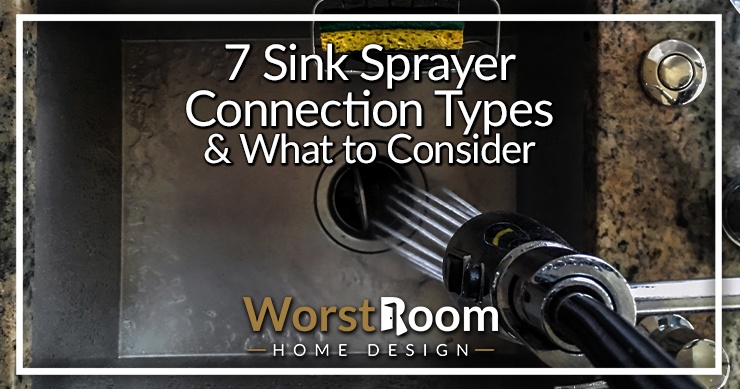
A kitchen sink sprayer is a handy tool that makes everyday cleaning tasks easier and more efficient. However, not all sink sprayers are created equal - they come in various connection types to suit diverse needs and preferences. Let's explore the different sink sprayer connection types, from quick-connect adapters to brass hoses and metal clips.
7 Sink Sprayer Connection Types
Whether you're installing a new faucet or replacing an old spray head, understanding these connection options will help you make the best choice for your kitchen setup.
Quick Connect Sink Sprayer Connections
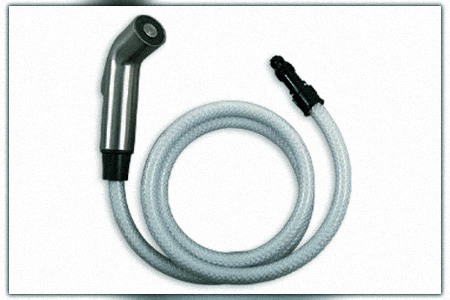
Quick Connect Sink Sprayer Connections are a popular and convenient choice for homeowners looking to update their kitchen faucets. These hassle-free connections combine efficiency with user-friendly installation methods, making them an ideal option for those seeking a seamless sprayer attachment process.
Slide-in Quick Connect adapters typically feature a plastic design where one side slides into the faucet body or hose connection, while the other side has threading to connect securely to the spray hose.
This simple yet effective mechanism ensures that your sink sprayer remains firmly in place, preventing any leaks or disconnections during use. On the other hand, threaded Quick Connects often utilize brass materials for added durability and longevity.
These plumbing fittings can be found at most home improvement stores and come in various sizes to accommodate different hoses and faucets.
Threaded Sink Sprayer Connections
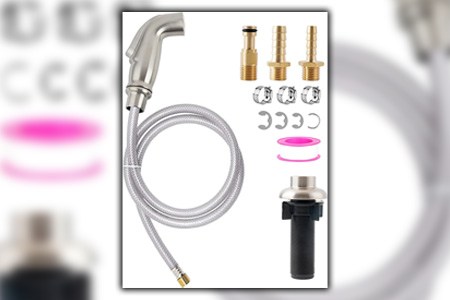
A threaded kitchen sprayer hose connection is a common and versatile option for kitchen faucets.
This type of connection features male or female threads that easily screw into corresponding threaded fittings on the faucet, hose, or water supply pipe.
The process of installing or removing threaded sink sprayer connections is typically straightforward and can be done with basic plumbing tools such as channel-type pliers but requires some attention to detail.
For example, when attaching a new sink sprayer with a threaded connection, it's important to align the thread correctly to avoid cross-threading which may damage the fittings.
Not only are these attachments reliable and durable over time but also widely available in various sizes and styles making them suitable for an array of kitchen plumbing fixtures – like standard-sized side sprayers as well as pull-out microfiber towel dispensers.
Compression Sink Sprayer Connections
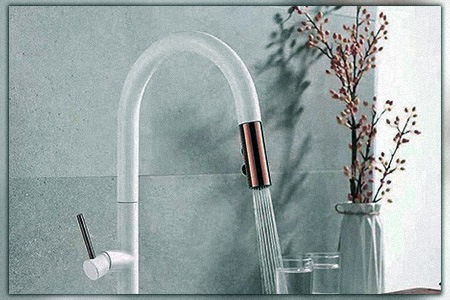
Compression sink sprayer connection types are a popular and reliable choice for securing your kitchen sprayer attachment to the water supply hose. This type of connection utilizes brass or metal fittings, which create a watertight seal through compression of an inner ring known as a "ferrule".
One advantage of compression sink sprayer connections is their availability in various sizes catering to different types of sink sprayers. For instance, Moen faucets require a specific size of sprayer fitting that may not be compatible with standard 5/16" or 3/8" compression fittings, so it's essential to select the correct size for your faucet model.
As you explore kitchen faucet accessories such as hose adapter replacements or plumbing fixture fittings for water supply connections on sinks, keep in mind that using high-quality materials ensures durability and longevity while reducing maintenance needs over time.
Push-Fit Sink Sprayer Connections
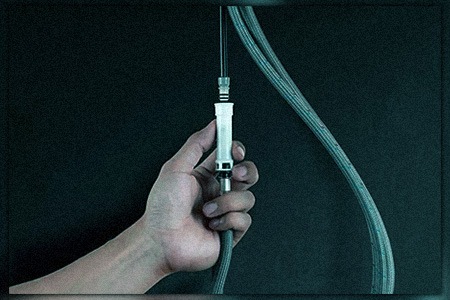
Push-fit connections are a popular type of sink sprayer connection that is easy to install and use. These fittings require no special tools or skills, making them an excellent choice for the DIY crowd.
One of the primary advantages of push-fit connections is their ease of use. With no threading or compression required, these connectors can be installed quickly and without any fuss.
Another benefit is their low maintenance needs; they rarely leak due to their secure hold on both ends despite high water pressure. They also do not require regular tightening like threaded connections might need as time goes by.
In summary, if you're looking for an easy-to-install option for your new or replacement faucet sprayer hose connection - try out one of these Push-Fit Sink Sprayer Connections!
Bayonet Sink Sprayer Connections
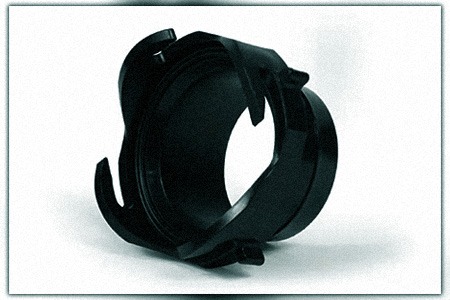
Bayonet sink sprayer connections are becoming increasingly popular due to their ease of use and convenience. This type of connector features a simple twist-and-lock mechanism, making it effortless to attach and detach the sink sprayer from the faucet.
One significant advantage of bayonet connectors is that they are less likely to leak than some other types of connectors. They also tend to be more durable than quick-connect fittings, which can wear out over time.
Overall, if you're looking for a hassle-free way to connect your sink sprayer quickly and easily while reducing leaks and maintaining durability, then a bayonet connection could be an excellent choice for you.
Magnetic Sink Sprayer Connections
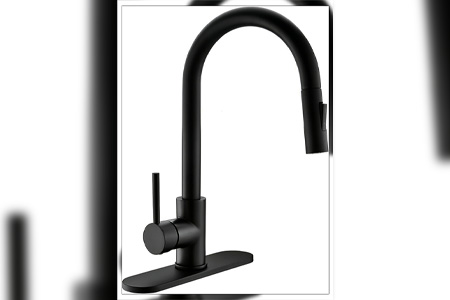
Magnetic sink sprayer connection types are a relatively new technology as far as a faucet sprayer attachment goes that is becoming increasingly popular in modern kitchens. These types of connections utilize a strong magnet to attach the sprayer hose to the faucet when not in use, eliminating the need for clunky clips or hooks.
The benefit of this type of connection system is that it provides a smoother and more seamless user experience, as there are no loose parts or awkward mechanisms to deal with when attaching or detaching the spray head from the faucet.
If you're looking for a kitchen faucet with magnetic sink sprayer capabilities, one option available on the market right now is Havin Gold Kitchen Faucet. It features a pull-down magnetic sprayer which makes it easy to switch between regular flow and high-pressure spraying modes.
Clamp-On Sink Sprayer Connections
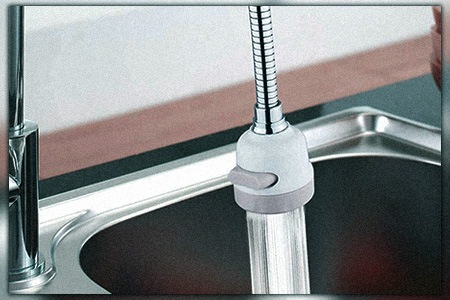
Another option for connecting a sink sprayer is the clamp-on connection. As the name suggests, this type of connection involves using a hose clamp to secure a plastic coupling to the kitchen sprayer.
This method can be an efficient and affordable way to replace a leaky or malfunctioning sprayer without needing professional assistance. These flexible hoses may also be more prone to leaking with these types of clamps as well.
If attempting to replace a kitchen sink sprayer using this connection type, one may also need plumber's putty and channel-type pliers for extra support during installation.
Comparison & Considerations for Sink Sprayer Connections
When it comes to selecting the right sink sprayer connection type for your kitchen, several factors should be considered. One key factor is the type of sink and faucet you have. Different connector types work better with specific types of sinks and faucets. For example, if you have a modern or commercial-style kitchen faucet with high water pressure, a threaded connection may be best as it can handle higher pressure compared to quick connect or compression options.
Ultimately it's essential to choose a connection type that suits your needs while also fitting within your budget while also considering long-term durability and ease of maintenance in case any issues arise down the line.
Factors To Consider When Choosing a Sprayer Connection Type
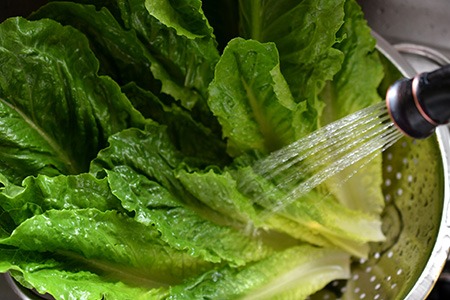
Don't just choose sink sprayer connection types in isolation. Consider your sink and faucet type, your DIY experience, budget, durability of the connection type, and the ease of maintenance and repair when choosing a sink sprayer connector.
Sink & Faucet Type
Choosing the right sink and faucet type for your kitchen is an essential part of any home improvement project. Depending on the size and design of your kitchen, you may prefer a one-hole sink or side-spray faucet that is common in bathrooms or smaller bars.
The configuration of a faucet can vary widely, with single-handle and two-handle options being popular choices. Additionally, modern fixtures offer a wide range of styles from traditional to contemporary designs.
DIY Experience
If you are a DIY enthusiast and have experience working on plumbing projects, selecting a sink sprayer connection type may not be daunting for you. However, if you lack such experience, it is essential to consider opting for user-friendly connections like Quick Connect or Push-Fit Sink Sprayer Connections.
These connection types require minimal installation effort and come with clear instructions that make the process easier.
It's also important to note that your existing faucet setup can impact your DIY experience when connecting a sink sprayer. For instance, if your faucet has limited access due to its design or location, installing some connection types may prove difficult even for experienced DIYers.
Budget
When it comes to choosing sink sprayer connection types, budget is an important factor to consider. Different types of connections come with different price points, and it's essential to choose an option that fits your financial situation.
For those on a tight budget, compression and threaded connections are usually the most affordable options.
However, if you're willing to spend more money for convenience and ease of use, magnetic or quick connect sink sprayer connections may be the way to go. Although they can be pricier than other connection types, they offer simple installation processes without requiring any special tools or professional assistance.
Durability
When it comes to choosing a sink sprayer connection type, durability is undoubtedly an essential factor to consider. Different connection types have varying lifespans and are more or less prone to leaks and malfunctioning over time.
For instance, some compression connections may wear out faster compared to quick connect or push-fit connections due to the increased pressure they are exposed to.
Another crucial aspect of durability is selecting the appropriate materials for your specific needs. For example, if you live in an area with hard water prone to corrosion, brass or stainless steel connectors may be better suited than plastic ones that can crack easily.
Maintenance & Repair
Proper maintenance and repair of sink sprayer connections are essential for the longevity of your kitchen plumbing fixtures. It's important to choose a connection type that is durable and easy to maintain.
When it comes to repairs, the most common issue is with the diverter. Sometimes a new diverter may not be located inside the faucet but instead connected to the sprayer hose below. Additionally, knowing about different types of pressure washer hose fittings, couplers, and adapters can help you when choosing replacement parts for your sink sprayer connection.
Key Takeaways Regarding Sink Sprayer Connections
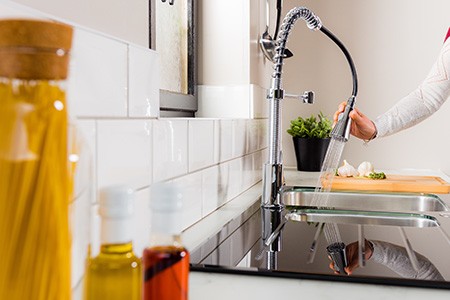
There are several types of sink sprayer connections, including quick connect, threaded, compression, push-fit, bayonet, magnetic, and clamp-on.
Factors to consider when choosing a connection type include sink and faucet type, DIY experience, budget, durability of the connection type, and ease of maintenance and repair.
Quick-connect adapters are efficient options that combine practicality with user-friendly installation methods; threaded connections feature male or female threads that easily screw into corresponding fittings on the faucet or hose; compression connections utilize brass or metal fittings that create a watertight seal through compression of an inner ring called a ferrule.
Push-fit fittings require no special tools or skills to install; bayonet connectors feature a simple twist-and-lock mechanism for attaching/detaching the sprayer from the faucet; magnetic connections use powerful magnets to attach the spray wand securely in place without extra space for storage like clip-on attachments need; clamp-on connections involve using some types of hose clamps to secure a plastic coupling to the kitchen sprayer.
All to Know About Sink Sprayer Connection Types
In conclusion, choosing the right sink sprayer connection type for your kitchen sink can make all the difference in functionality and ease of use. From quick connect to threaded connections, each option has its own advantages and considerations.
Factors such as budget, DIY experience, and durability should be taken into account when making a decision about which sink sprayer connection types you'll settle on. Whether you're replacing a leaking hose or installing a new sprayer attachment, knowing the various connector types and materials needed will help guide you through the process.



